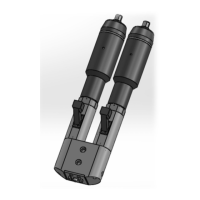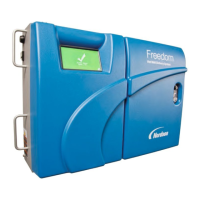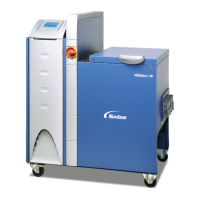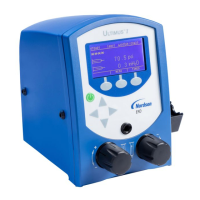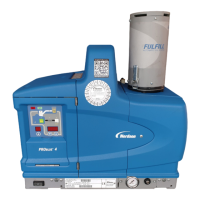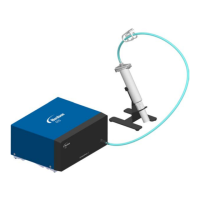
Do you have a question about the Nordson Asymtek X-1010 and is the answer not in the manual?
| Type | Dispenser |
|---|---|
| Accuracy | ±25 µm |
| Fluid Types | Adhesives, sealants |
| Z-axis Clearance | Customizable based on configuration |
| Resolution | 1 μm |
| Dispensing Technology | Positive Displacement |
| Maximum Dot Size | Varies with application |
| XY Positioning Accuracy | ±25 µm |
| Z Axis Resolution | 1 μm |
| Machine Dimensions | Varies based on configuration |
| Weight | Varies based on configuration |
| Power Requirements | 200-240 VAC, 50/60 Hz |
Explains the importance of safety warning labels, describes common symbols (Electrical, Hot Surface, Fuse, Heavy Object), and their hazards and precautions.
Covers procedures for safely starting up and shutting down the X-1000 system, including power inlet, ON/OFF buttons, pneumatic regulators, service shutdown, and lock-out/tag-out.
Details the Emergency Machine Off (EMO) buttons, operation, situations requiring EMO, recovery steps, and the EMO circuit diagram.
Explains the Safety Interlock feature which stops dispensing when the hood is open, and the Light Beacon's role in indicating system status with colored lights and alarms.
Details operator safety, lifting precautions, material safety, ESD precautions, system protection, and additional precautions for service personnel.
Explains the X-1000 dispensing system's theory of operation, covering system mechanics, dispense head, conveyor, FmNT software, and operations flow.
Identifies possible causes and solutions for system power failure, including main power, system power, and interlock fault isolation procedures.
Covers fault isolation procedures and troubleshooting guidelines for XY-axis motion failure, including main power, servo amplifier, and PMAC verification.
Details fault isolation procedures and troubleshooting guidelines for Z-axis motion failure, including no Z-axis motion, servo amplifier, and PMAC verification.
Outlines symptoms, probable causes, and fault isolation procedures for PMAC problems, including initialization, watchdog, rotary encoders, linear encoders, mechanical issues, and home sensors.
Identifies possible causes of pneumatic failure, such as air leaks, incorrect pressure, or disconnected supply, and provides fault isolation procedures.
Covers conveyor fault isolation procedures for issues like board sensors, motors, heaters, and SMEMA communication, along with general troubleshooting guidelines.
Identifies common scale problems, their causes, and recovery procedures, including initialization, zero reading, inaccurate measurements, and communications.
Provides procedures for troubleshooting height sensor problems, including power verification, probe verification, repeatability, CAN interface, and PIO 96 signal verification.
Outlines troubleshooting procedures for needle and tactile sensors, including fault isolation and summary of common problems and their recovery.
Details troubleshooting procedures for vision system issues such as no image, unfocused image, no lighting, inaccurate dispensing, and no display on the monitor.
Describes common troubleshooting techniques for DP-3000, DV-7000, and DJ-2000 dispense pumps and valves, covering intermittent dispensing, no power, material drips, and leaks.


